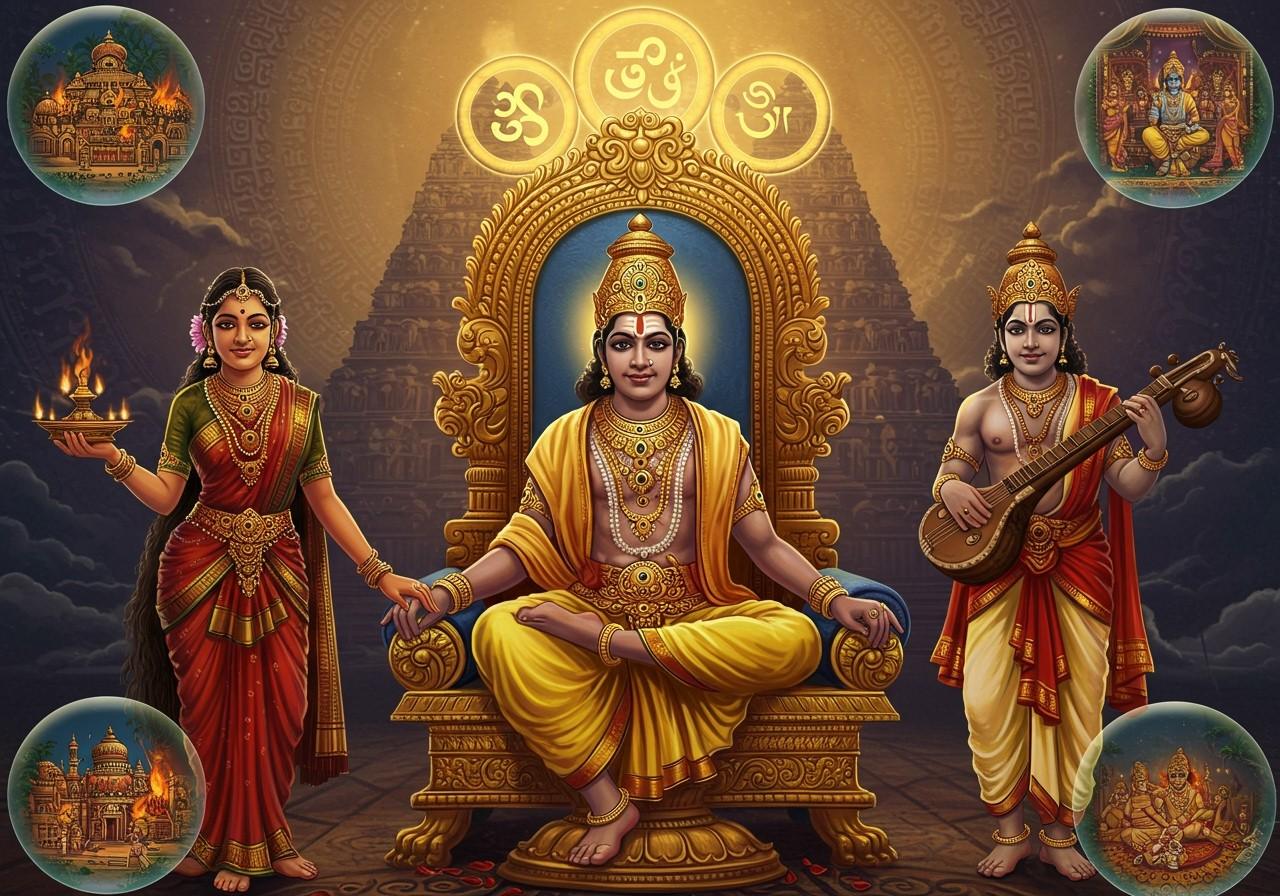
Ilango Adigal, a revered Tamil poet, is renowned for his epic Silappathikaram (or Cilappatikāram). This work, composed in the 5th-6th century AD, stands as the earliest Tamil epic. This blog delves into the literary style and themes of Ilango Adigal, offering a critical analysis of his magnum opus and other writings. By understanding the cultural and historical tapestry surrounding his work, we can truly appreciate the depth and enduring significance of his contributions to Tamil literature.
Historical and Cultural Context
Ilango Adigal composed his masterpiece during the Sangam era, a period renowned for its flourishing Tamil literature. Societal norms and values were deeply entrenched in tradition during this time. The Chera dynasty, known for their patronage of the arts, provided crucial support to Ilango Adigal and other literary luminaries. Jainism also played a significant role, imbuing his writings with layers of spiritual and philosophical profundity. Silappathikaram, his most celebrated work, occupies a prominent place in Tamil literary history and has served as an inspiration for countless subsequent works. As per Ramachandra Dikshitar’s analysis, the epic predates the Pallava dynasty’s rise to power in the 6th century, a view widely accepted among scholars.
Literary Style of Ilango Adigal
Ilango Adigal’s literary style is both distinctive and captivating. He masterfully employed various poetic meters, such as akaval and venpa, adding richness and complexity to his narratives. His adept use of literary devices, including similes and metaphors, elevates his storytelling to an art form. The seamless blending of prose and verse within Silappathikaram creates a dynamic and engaging reading experience. His descriptive language vividly portrays characters, settings, and emotions, immersing the reader in the world he creates. Classical Tamil poetics, encompassing elements like tinai (landscape) and mutal (season), profoundly influenced his distinctive style.
Themes in Silappathikaram
Silappathikaram explores several profound themes that resonate even today:
- Justice: The epic centers around Kannagi’s unwavering quest to avenge her husband Kovalan’s unjust execution in Maturai, highlighting the importance of fairness and retribution. Her relentless pursuit of justice forms the emotional core of the narrative.
- Dharma (Righteousness): The concept of dharma plays a pivotal role in shaping the characters’ actions and decisions. The epic explores the complexities of dharma and its impact on the characters’ destinies, questioning its true meaning in a world filled with injustice.
- Love and Loyalty: The deep and enduring bond between Kannagi and Kovalan serves as a powerful illustration of love and loyalty in the face of adversity. Their relationship stands as a testament to the strength of human connection amidst trials and tribulations.
- Portrayal of Women: The epic highlights the strength, resilience, and agency of women, particularly Kannagi. Her unwavering determination and courageous actions challenge societal norms and make her an iconic figure in Tamil literature.
- Fate and Free Will: The interplay of fate and free will is a recurring motif throughout the narrative. The characters grapple with the forces that shape their lives, exploring the extent to which they control their own destinies.
- Divine Intervention: The epic incorporates elements of divine intervention, exploring the impact of the gods on the characters’ lives and the consequences of their actions. This adds a layer of spiritual depth to the narrative.
- Social Critique: Ilango Adigal uses the narrative to address social issues such as corruption, moral decay, and the abuse of power. The epic serves as a commentary on the social and political landscape of the time.
Ilango Adigal’s Other Works
While Silappathikaram remains his most renowned work, other writings attributed to Ilango Adigal also showcase his literary brilliance. Some poems believed to be his share thematic connections with his epic. These works offer valuable philosophical insights and maintain a stylistic consistency with his more famous piece. Although some works are unfortunately lost to time, surviving fragments reveal his lasting influence on later Tamil poets and scholars. His literary contributions have been preserved through both oral and written traditions, ensuring their continued relevance.
Critical Reception and Legacy
Ilango Adigal’s works, particularly Silappathikaram, have garnered critical acclaim throughout the centuries. The epic’s influence on Tamil literature is undeniable, with references and allusions appearing in numerous modern works. Its timeless themes and distinctive style continue to be relevant in contemporary literary discourse. Silappathikaram is a staple of academic curricula in Tamil Nadu and beyond, ensuring its enduring presence in literary studies. Adaptations in various art forms, including dance, theater, and film, further solidify Ilango Adigal’s legacy and keep his work alive for new generations.
Poojn.in: Connecting You to Ancient Literature and Traditions
At Poojn.in, India’s leading online store for cultural goods and services, we understand the profound significance of ancient texts like Silappathikaram and their connection to Indian culture. We offer a wide array of products related to Tamil traditions and literature, helping you connect with your heritage in meaningful ways. Explore our collection and discover unique items that celebrate the richness of Tamil culture. Visit www.poojn.in today.
Conclusion
Ilango Adigal’s contributions to Tamil literature are truly timeless. Silappathikaram, his epic masterpiece, offers a captivating narrative while providing invaluable insights into the cultural, spiritual, and societal aspects of his time. The unique literary style, rich themes, and profound messages continue to resonate with readers and scholars alike. By appreciating Ilango Adigal’s artistry, we honor the enduring tradition and heritage of Tamil literature. His legacy lives on, inspiring generations and reminding us of the power of poetry and storytelling.
Ramayana Characters and Life Lessons
Dharma in the Ramayana: A Thematic Exploration
Ramayana: Timeless Lessons for Modern Life
Ramayana Women: Their Strength and Modern Relevance


